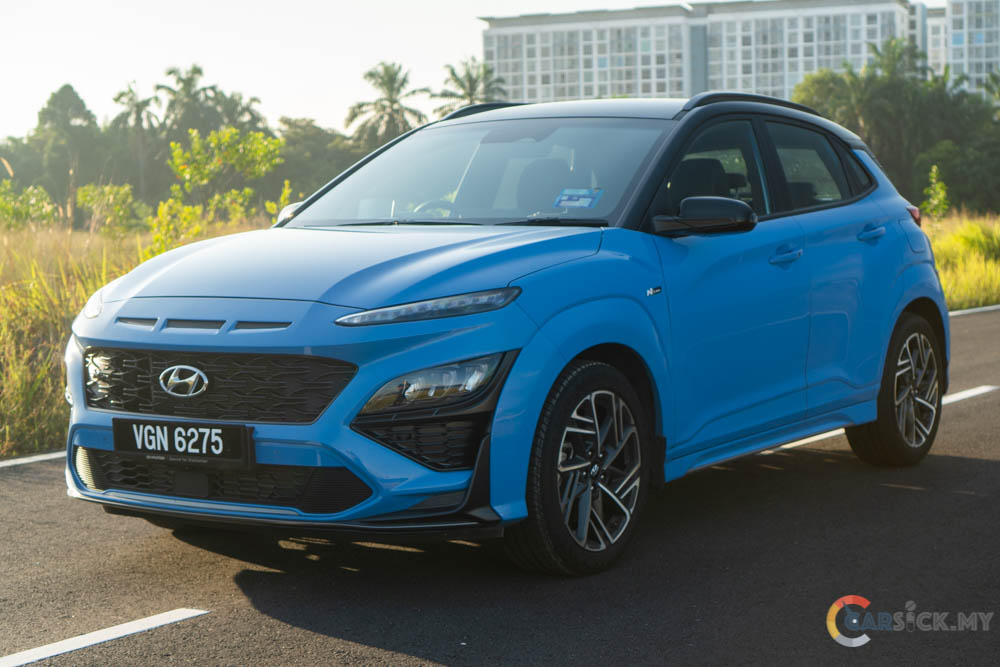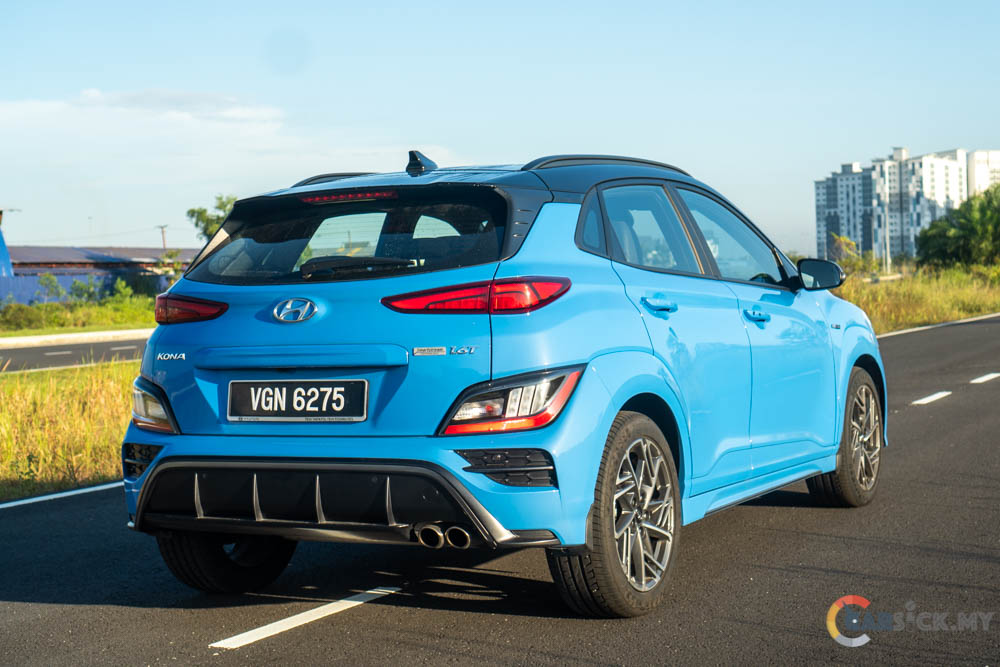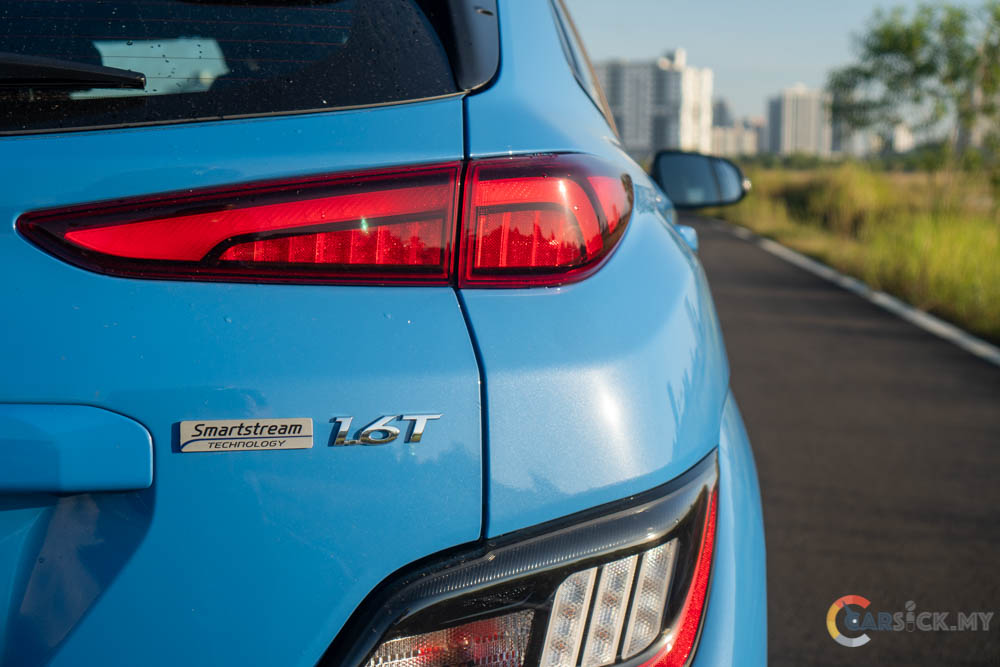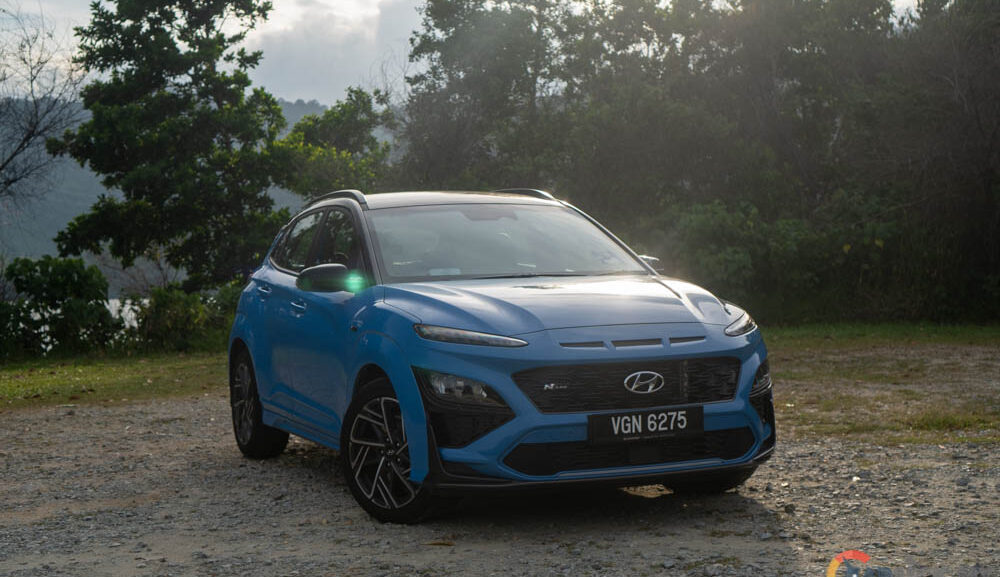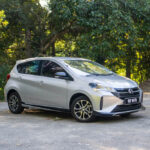In Malaysia, the Hyundai Kona comes in 7 different variants, and 3 different powertrains. In the middle of the bunch, sits the Hyundai Kona N-Line. The Kona N-Line in Malaysia is powered by a powerful 1.6L turbocharged engine. With this powertrain, it made the Kona N-Line the most powerful B-segment crossover currently on sale in Malaysia.

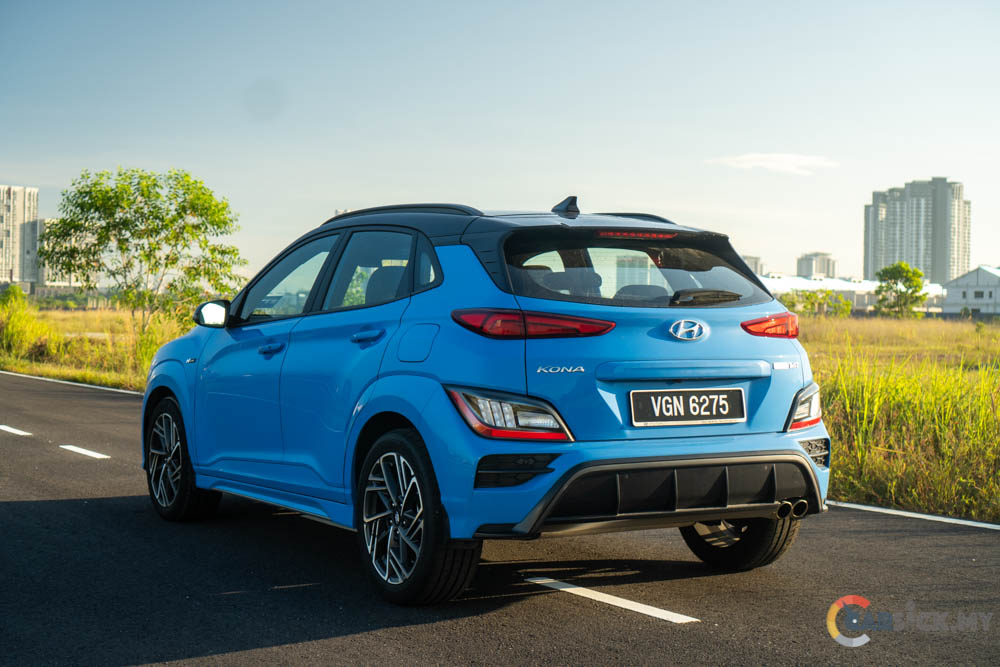 Fully imported from Korea, the Kona N-line comes with a much sportier looking exterior compared to the Kona 2.0. Instead of black plastic cladding, the lower portion of the Kona N-Line is now body coloured and features a more aggressive styling cues. The aggressive styling is contributed by the multiple fake vents and some real vents around the vehicle.
Fully imported from Korea, the Kona N-line comes with a much sportier looking exterior compared to the Kona 2.0. Instead of black plastic cladding, the lower portion of the Kona N-Line is now body coloured and features a more aggressive styling cues. The aggressive styling is contributed by the multiple fake vents and some real vents around the vehicle. 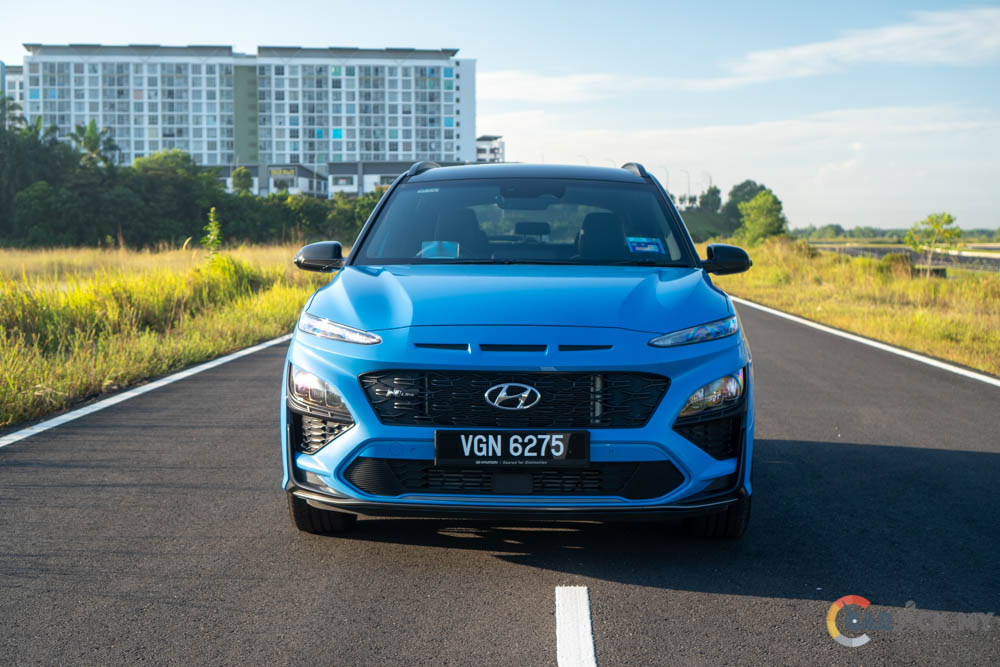
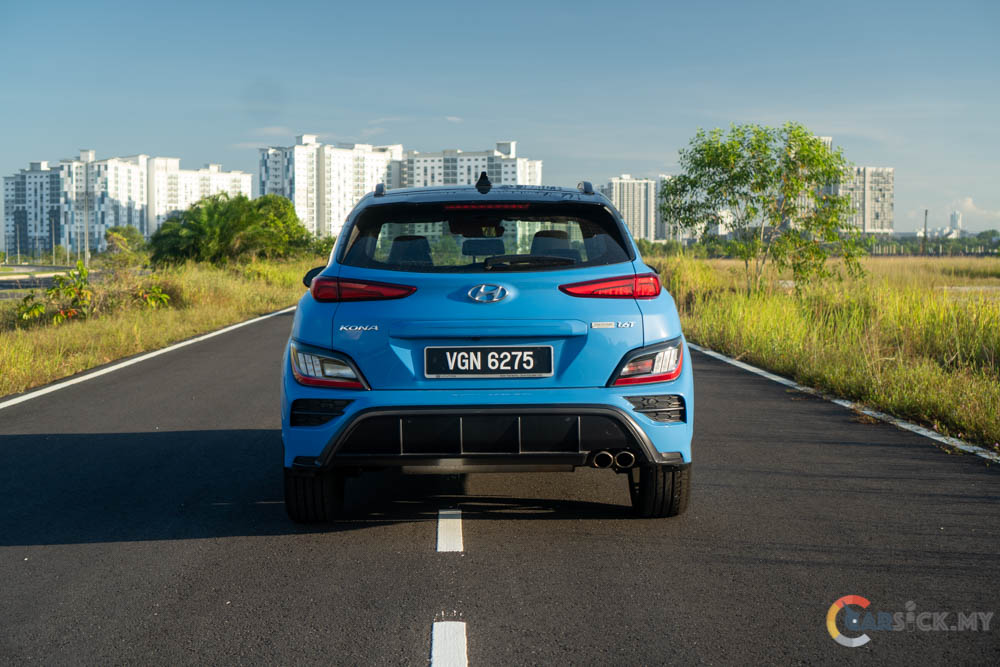
At the rear, there is the faux diffuser on the rear bumper to continue with the sense of sportiness. Around the car, N-Line badges are strategically placed in order to remind others that this is the sportier variant of the Kona. Overall, I think that this Kona definitely looks the part, and based on looks alone, it will attract younger buyers. 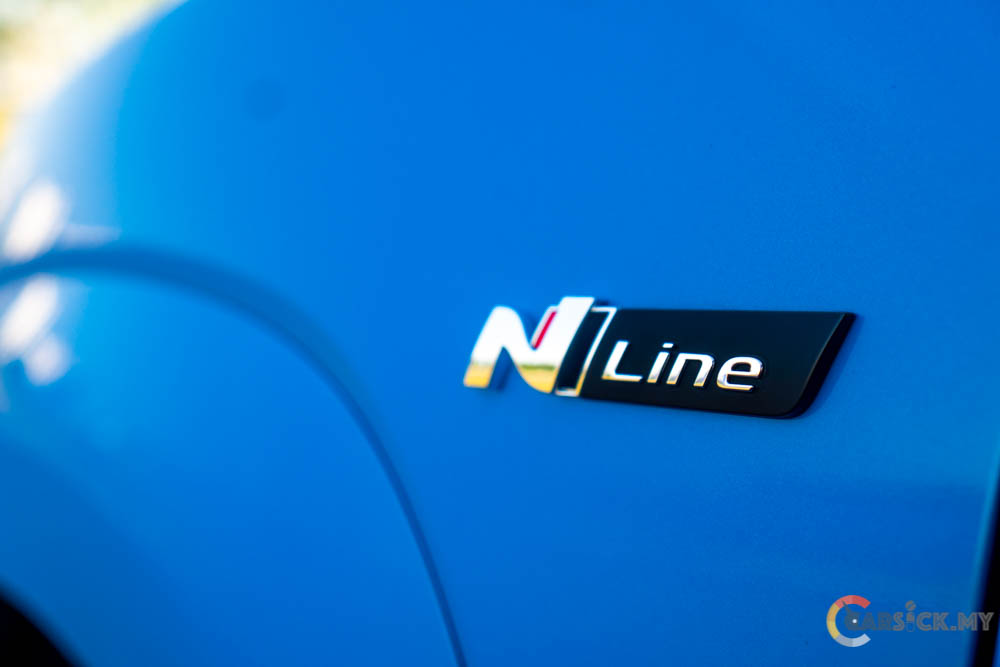
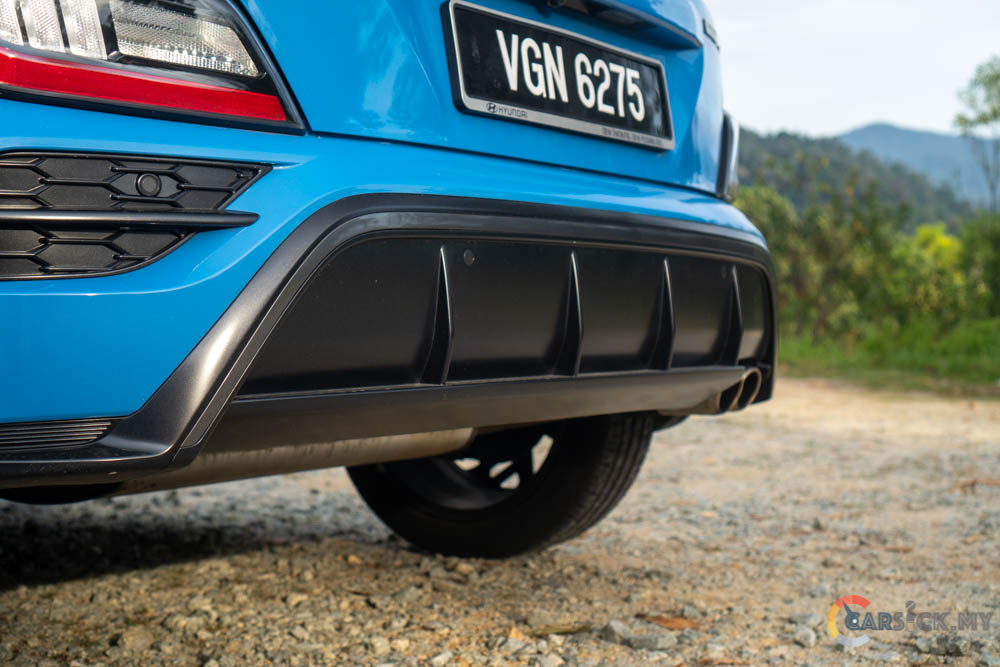


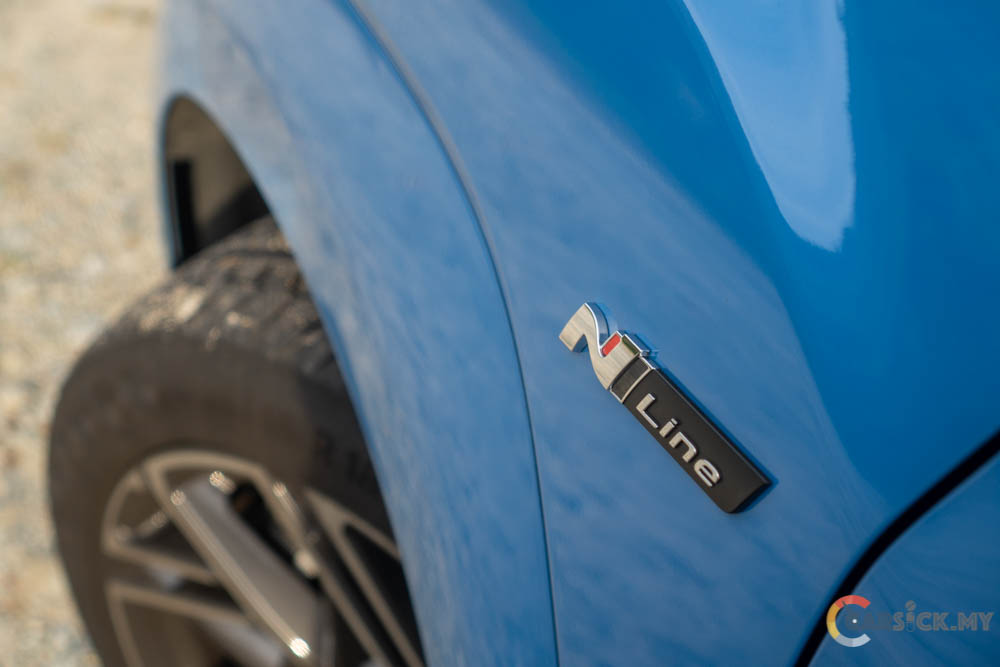
Interior wise, everything is pretty much the same as the Kona 2.0, but the main color theme here is black colour. Instead of the fancy looking bright coloured leather seats, the Kona N-line gets suede-like materials mixed with leather for the seats. From the steering, to the gear lever, and to the front seats, all featuring the N logo to remind you that this is the sportier version of the Kona. 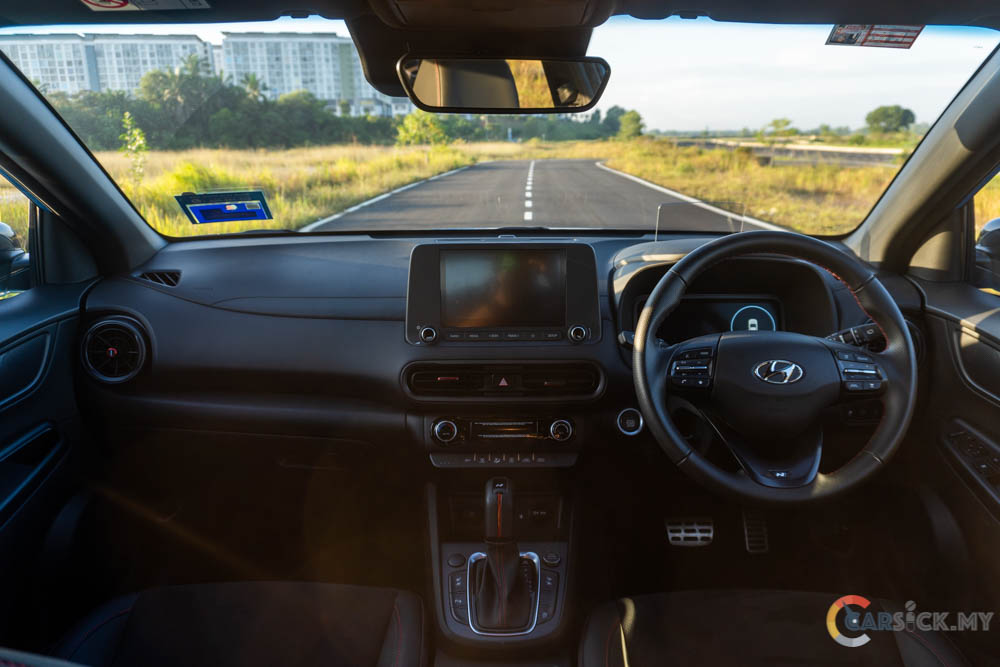
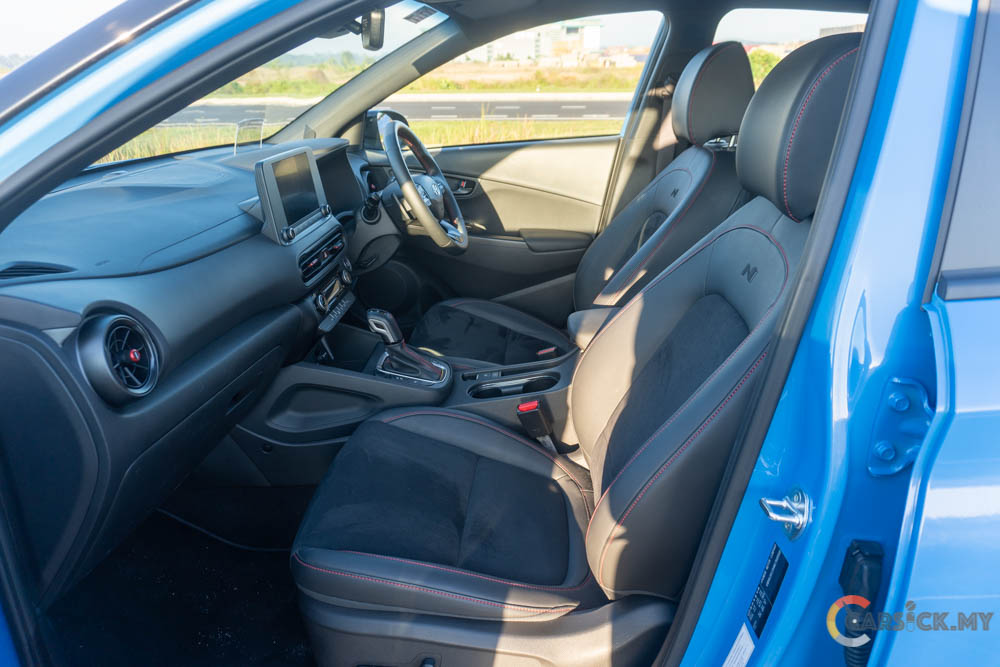
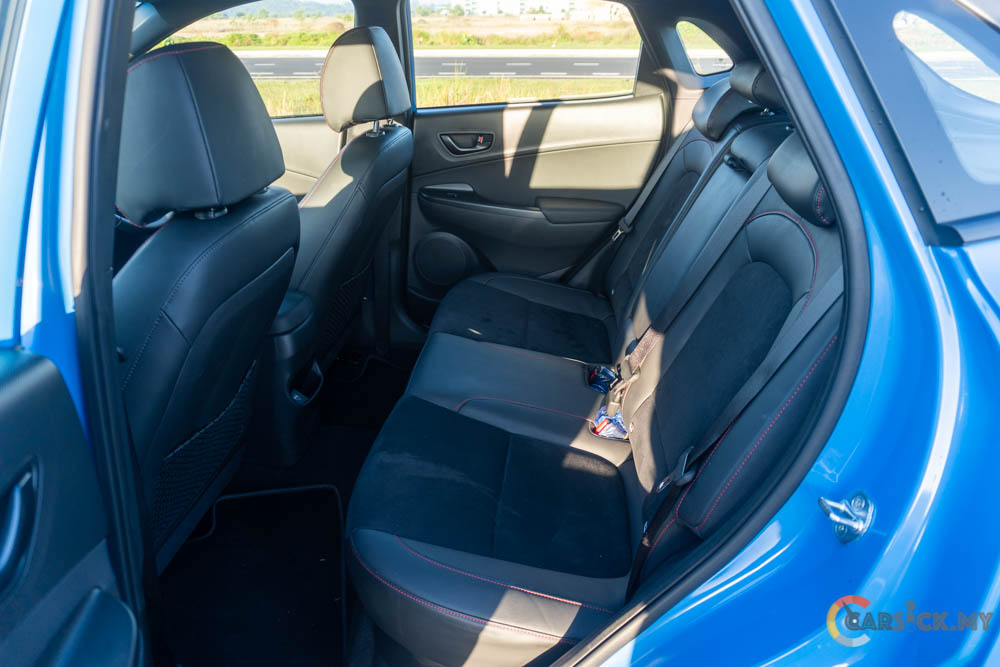
In terms of differences, the Kona N-line gets cooled and heated front seats. Apart from that, drivers not only have the option to switch in between drive modes, but they have the ability to choose the traction mode as well to help the Kona out of difficult situations. These 2 features are absent on the 2.0L Kona. 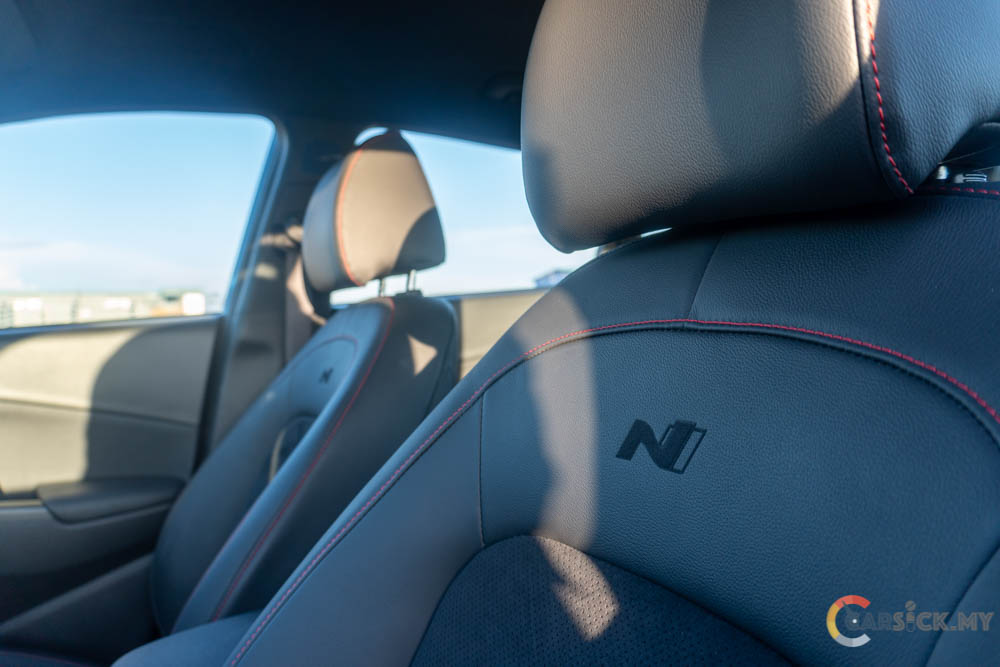

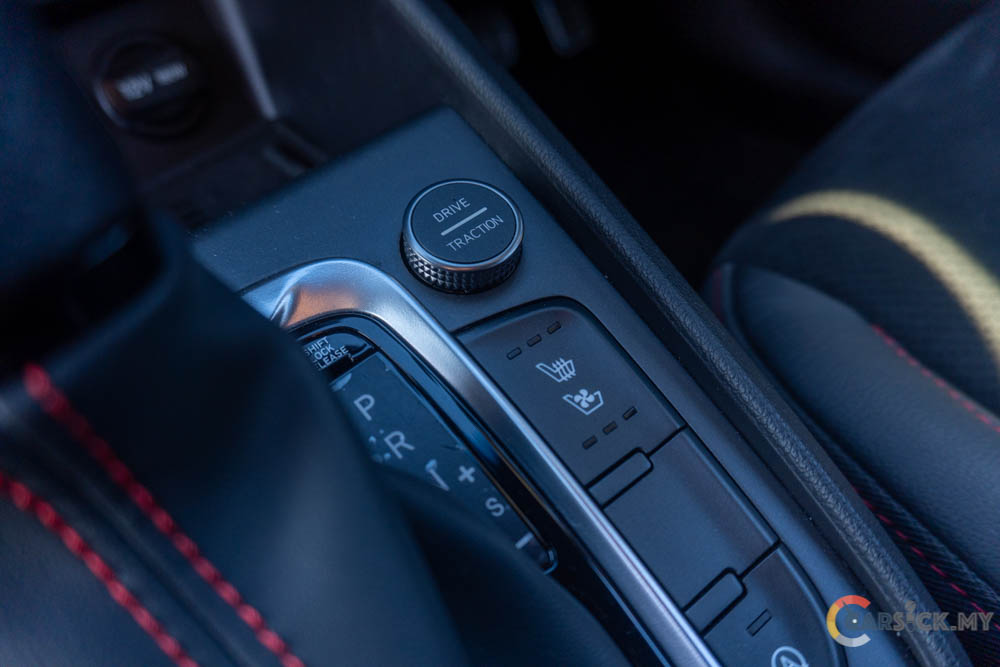

Coming to the power train, the Kona N-line is fitted with the powerful 1.6L turbocharged Smartstream engine, mated to a 7-speed dual clutch transmission. The 1.6L turbo engine produces around 198PS at 6,000rpm, while the peak torque of 265Nm comes in around 1,600 – 4,500rpm. Official figure from Hyundai is that the Kona N-Line can hit the 100km/h mark from standstill in 7.7 seconds, and to a top speed of 218km/h. 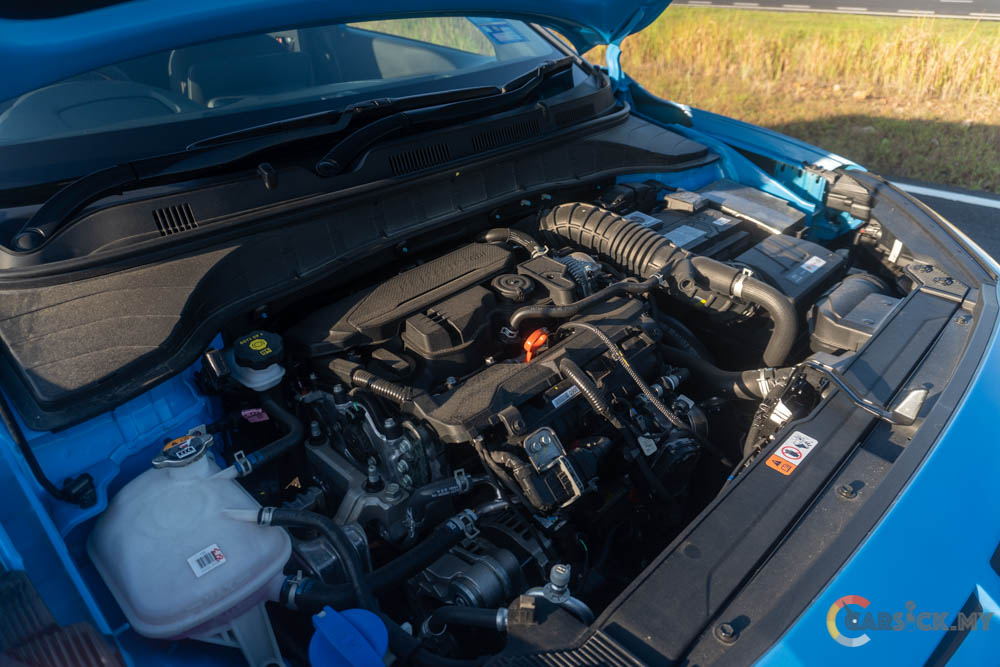
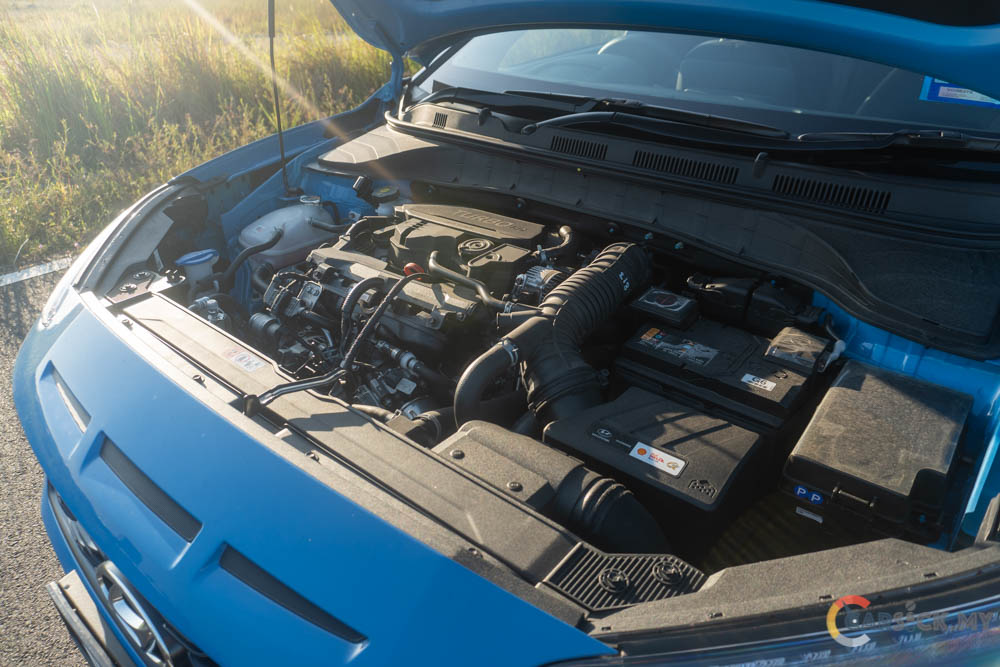
While driving, I find that the acceleration is not as rapid as I would have hoped for. Nonetheless, the engine is still strong enough to make overtaking easy, even on uphill. Initially, I was struggling to drive the car smoothly, as I found that the throttle pedal is quite sensitive, which I eventually got used to.
As for the transmission, the dual clutch transmission is not as quick or snappy as those found on certain German brands. My best guess is that Hyundai is trying to protect the DCT from wearing out too fast. However, gear changes are smooth and the 7-speed gear ratio does help provide a good fuel economy.
In terms of ride, The Kona N-line does ride a tad on the firmer side, which it works in favor of to keep the body roll at bay when taking corners. When going over bumps and uneven roads, the suspension still has the sense of sophistication in damping out the vibrations and shocks that were created going over these road conditions. 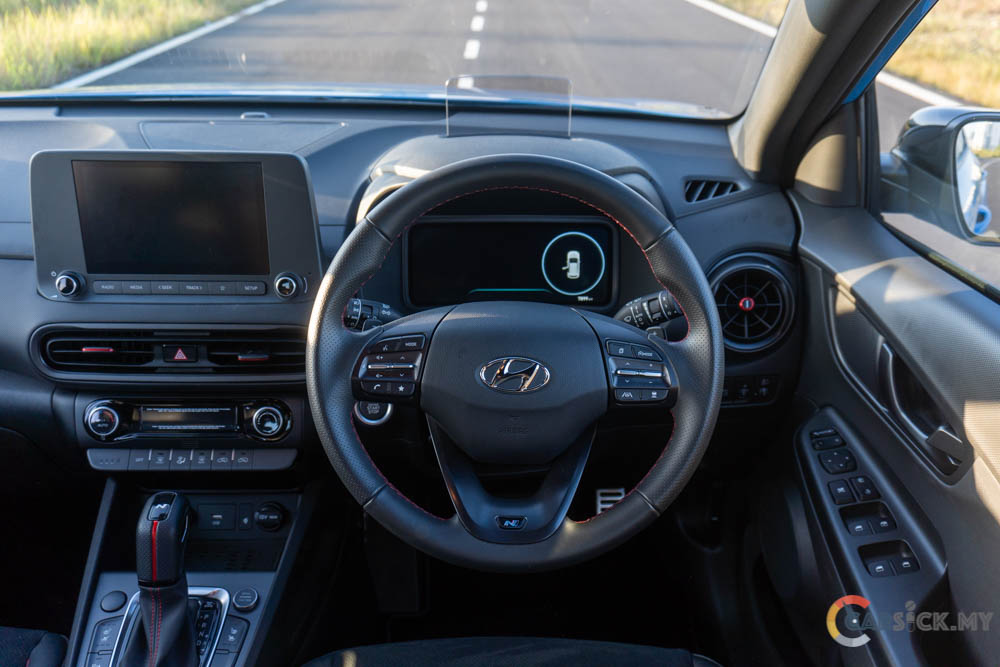
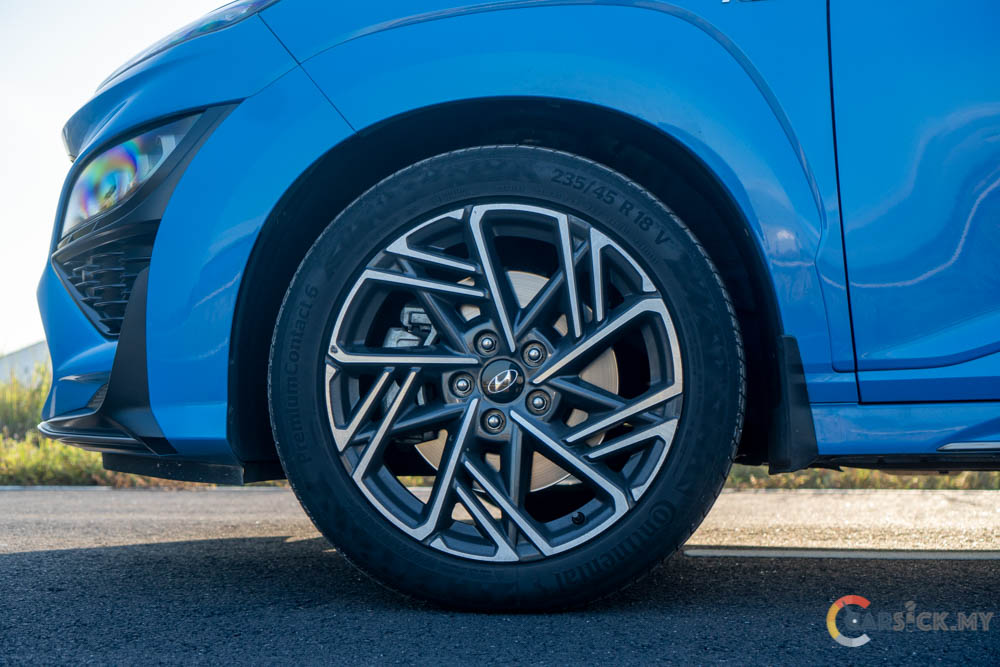
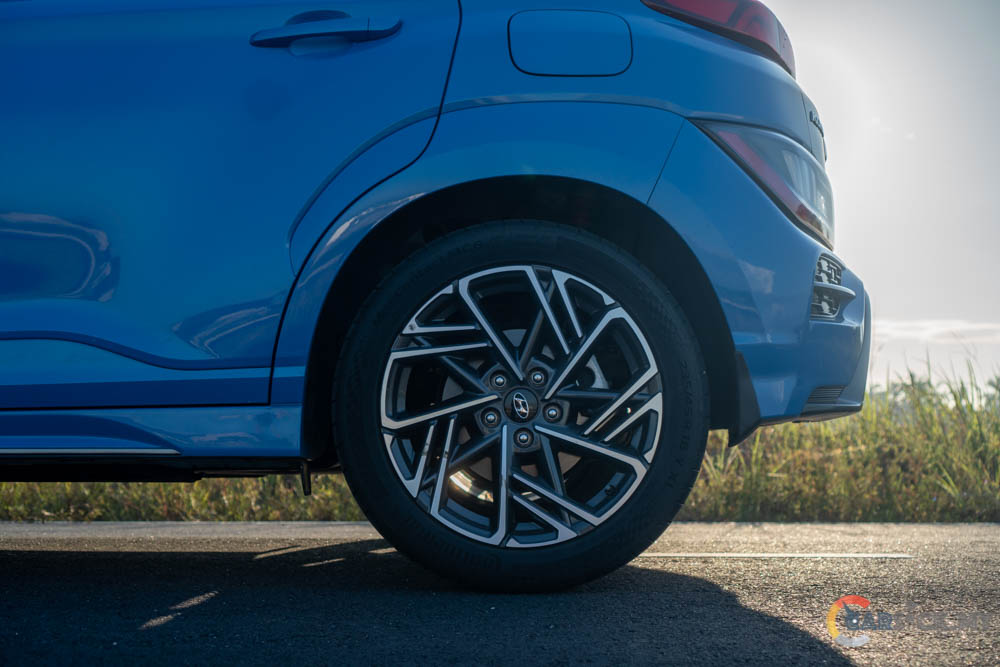
On twisty roads, the steering wheel felt direct and weighted up nicely. Even though this is a crossover, I can feel that the center of gravity is quite low. Pairing these 2 factors together, it made the Kona N-line a very capable crossover when it comes to handling.
In order to slow down the Kona, the brakes do have sufficient stopping performance. In my opinion, I would like to feel the biting point from the brake pedal at a higher point, which can increase the confidence level for the driver when braking.
For safety, the Kona N-line is filled to the brim with safety and driver assistance systems. On the passive safety side, Kona N-Line gets 6 airbags, ABS, ESC, VSM, EBD, TCS, Hill-Start Assist Control (HAC), and Downhill Brake Control (DBC). Driver assistant side, Kona N-Line gets Blind-spot Collision-Avoidance Assist (BCA), Rear Cross Traffic Collision-Avoidance Assist (RCCA), Lane Keeping Assist (LKA), Lane Following Assist (LFA), Smart Cruise Control with Stop & Go (SCC w S/G), Forward Collision-Avoidance Assist (FCA), High Beam Assist (HBA), Driver Attention Warning (DAW), Rear Occupant Alert (ROA), and Safe Exit Warning (SEA). 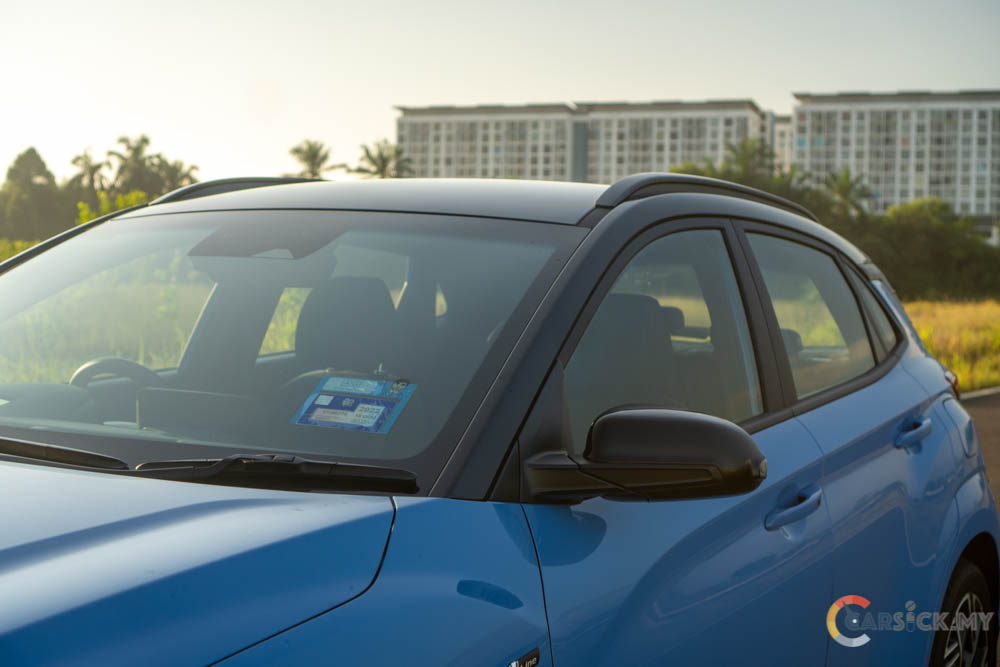
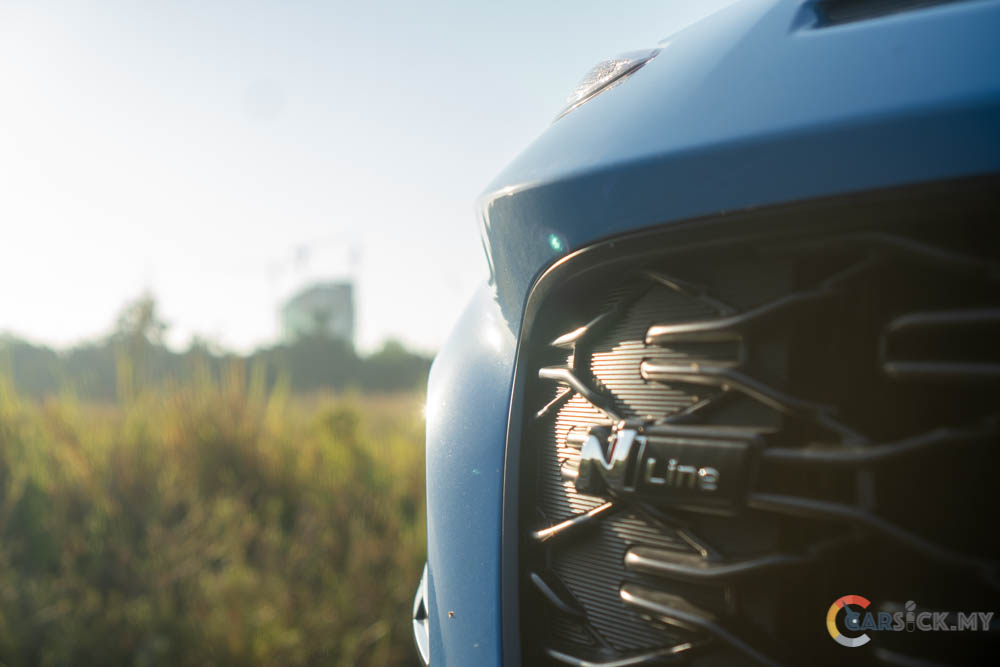
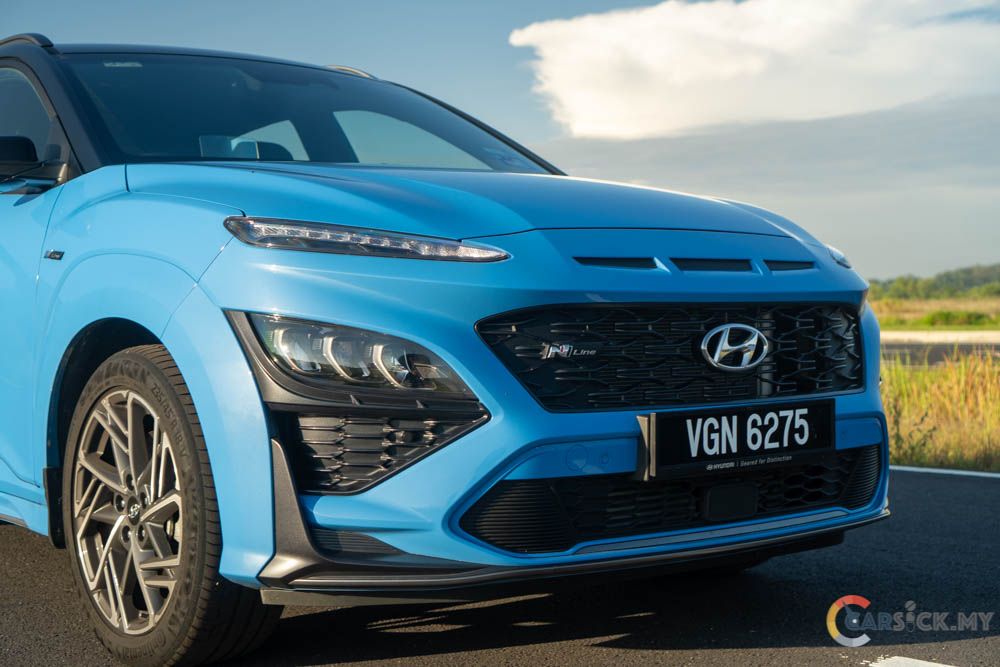
To conclude, the Kona N-Line is actually a very capable crossover just like it’s 2.0L sibling. Priced at RM 156,888, the Kona N-line is designed for those owners who wanted something that not only stands out from the crowd, but also a very capable vehicle in terms of performance. As for those who are not very keen with performance, I personally think that the 2.0L Kona is more than sufficient compared to the N-line variant. Next up, hopefully we will get to experience the Kona EV here on this channel together.
Check out full gallery here.